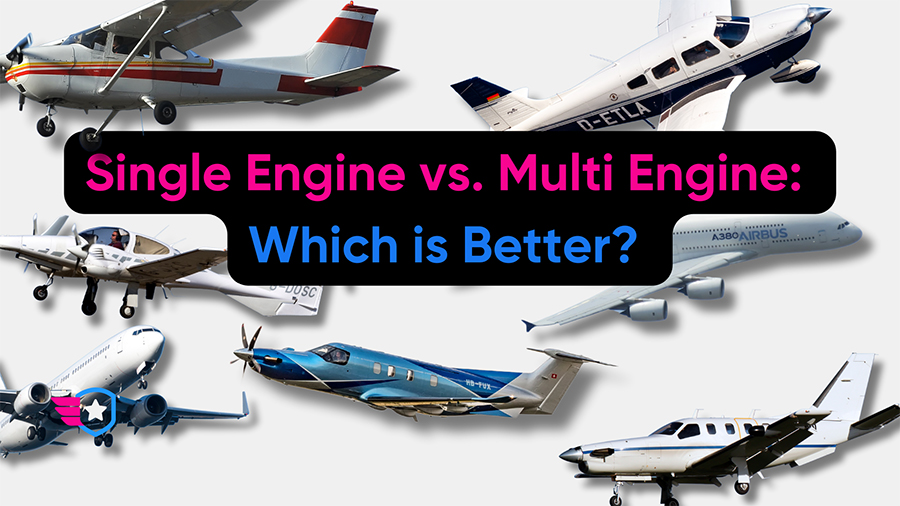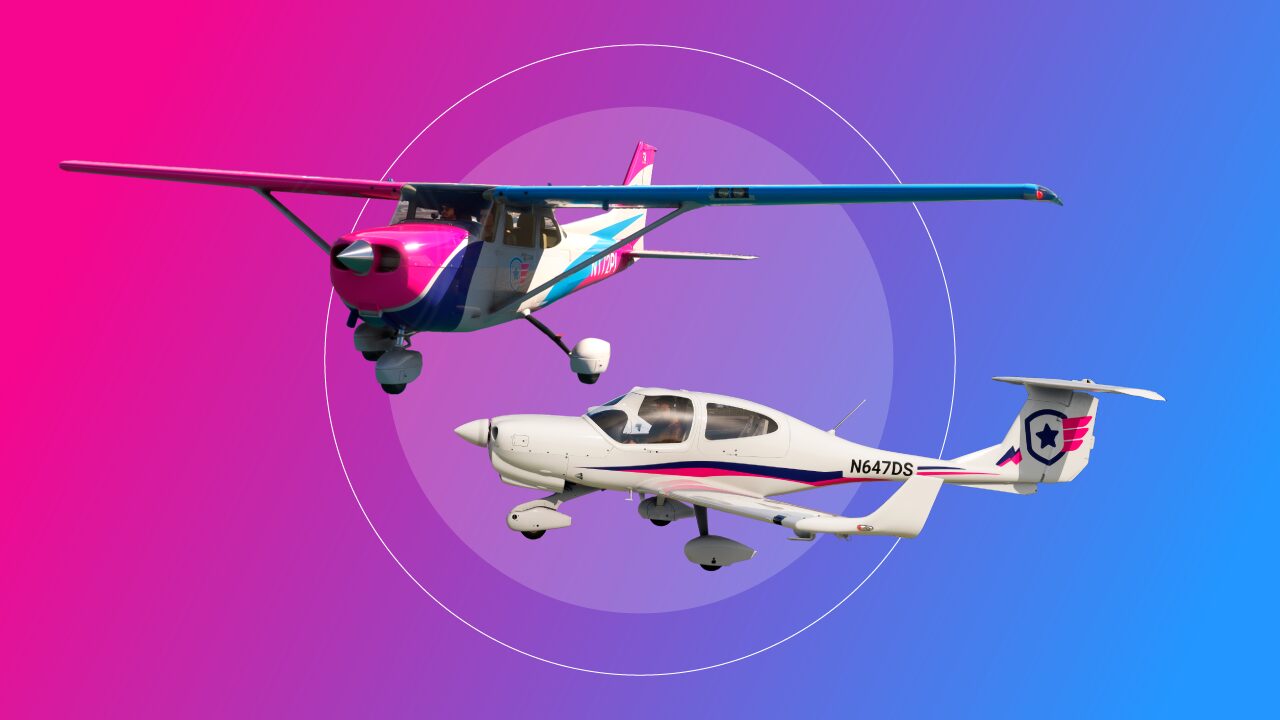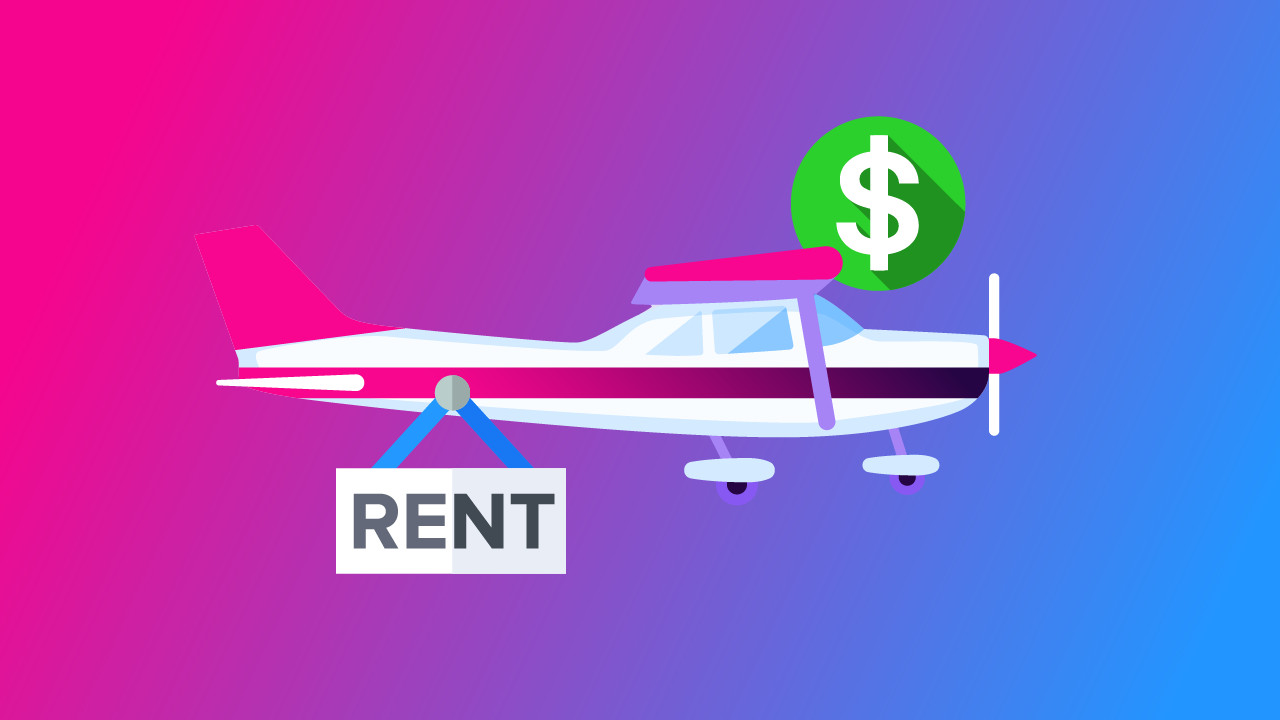Airplanes come in all shapes and sizes. One of the most significant differences between them is the number of engines they have.
So, is it better to have more, or will one do?
The answer isn’t as simple as choosing between vanilla and chocolate. Many aviators grapple with this dilemma, and, as you might expect, both have their unique pros and cons.
Fear not!
We’re about to embark on a detailed exploration of single-engine versus multi-engine aircraft. Together, we’ll compare performance, safety, costs, and other critical factors.
By the end of this journey, you’ll be well-equipped to decide which aircraft suits your needs.
Here’s the summary:
| Single-Engine | Multi-Engine | |
| Performance | ✓ | |
| Cost | ✓ | |
| Safety | ✓ | |
| Simplicity | ✓ |
What is a Single Engine or Multi-Engine Airplane?
Let’s start by decoding the terms.
A single-engine airplane, as the name suggests, is equipped with one engine. It’s a favorite among new pilots and those flying for leisure, due to its simplicity and lower operating costs.
You’ll often see these aircraft in local flight schools or private hangars. Common examples of small single-engine aircraft include the Cessna 172 and the Piper PA-28.
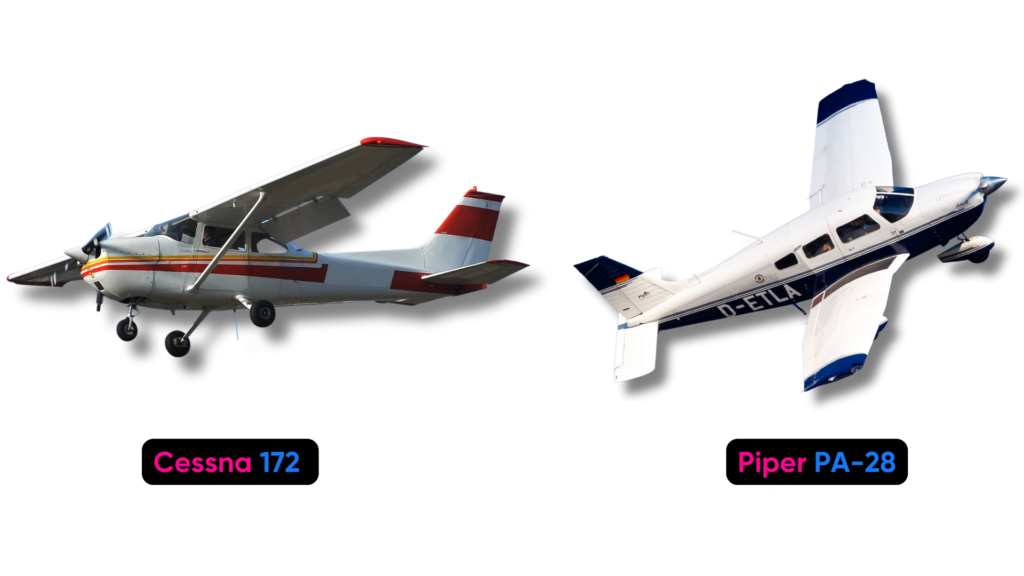
Single-engine turboprop aircraft, like the Pilatus PC-12, Cessna 208, and Daher-Socata TBM series, have become increasingly popular in recent years. We’ll explore why later in this article.

What about multi-engine airplanes?
Multi-engine airplanes come equipped with more than one engine, usually two, but sometimes even three or four. These aircraft are typically faster, carry more passengers or cargo, and can provide added safety in case of an engine failure.
Popular small multi-engine airplanes include the Diamond DA-42 and the Beechcraft Baron.
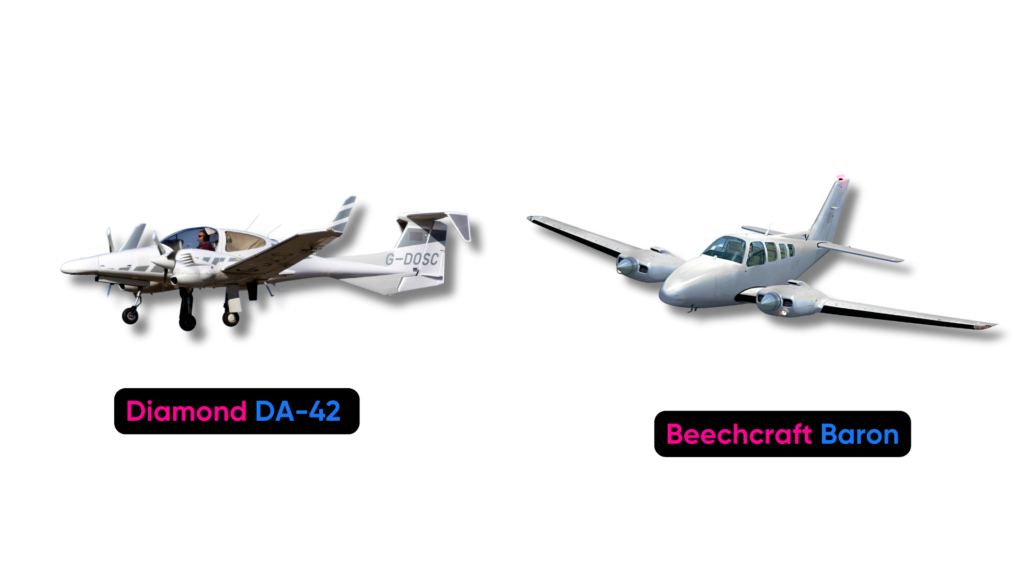
You’ll also find that nearly all commercial aircraft, like the Boeing 737 or Airbus A380, feature multi-engine designs.
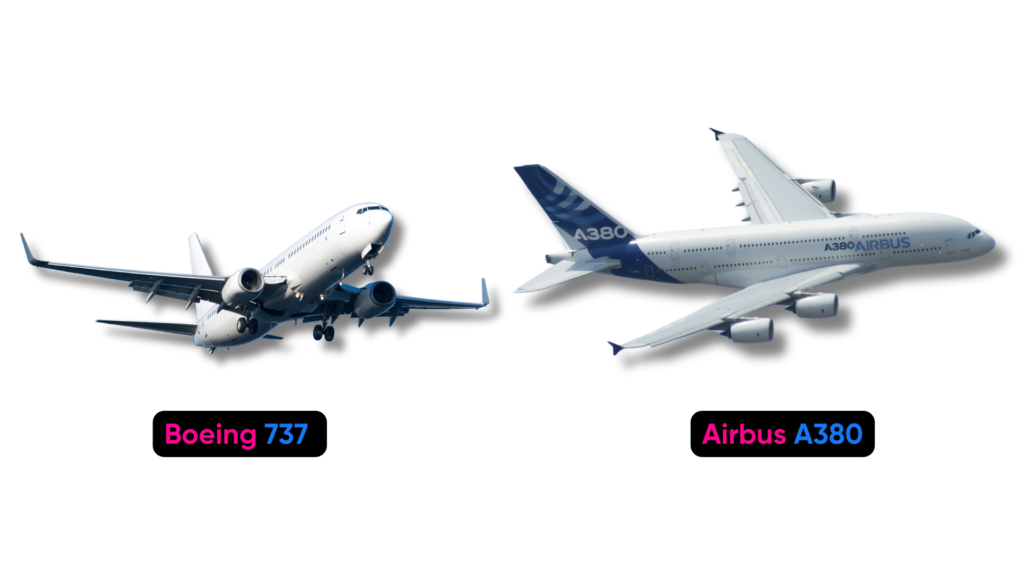
In a nutshell, the main difference boils down to the number of engines. However, as we’ll discover, this simple distinction fails to tell the whole story.
Quick Comparison: Single vs. Multi Engine
Ready to kick off the comparisons? Let’s jump right in with a quick overview.
| Single-Engine | Multi-Engine | |
| Performance | ✓ | |
| Cost | ✓ | |
| Safety | ✓ | |
| Simplicity | ✓ |
When it comes to performance, multi-engine airplanes have the upper hand. They are generally faster and more powerful, thanks to their additional engines. However, with extra power comes more complexity. Flying a multi-engine aircraft requires more skill and experience.
Safety is another key aspect. In theory, having multiple engines should increase safety. If one engine fails, the other can help get you safely back to the ground. But don’t let this fool you. Engine failure in a multi-engine airplane can lead to complex situations that require advanced pilot skills.
Now, let’s talk about costs. Single-engine airplanes are usually more wallet-friendly. They tend to have lower purchase, operating, and maintenance costs. On the flip side, while multi-engine airplanes offer greater capabilities, they also come with heftier price tags and increased fuel consumption.
Both types of aircraft have their strengths and weaknesses. The choice between single and multi-engine will depend on factors like your flying purpose, pilot experience, and budget.
Let’s dive deeper into each of these aspects in the following sections.
Single vs. Multi-Engine: Performance
Performance is a hot topic when discussing single and multi-engine airplanes, so let’s break it down.
Starting with speed, multi-engine airplanes generally hold the trophy. With more engines, they can generate more power, which often translates into faster speeds. That’s why you’ll typically see multi-engine aircraft used for longer trips, business flights, or when time is of the essence.
But it’s not just about speed.
Multi-engine planes also tend to have higher payload capacities and can fly higher. In simple terms, they can carry more passengers or cargo. If you’re planning to fly with your family or need to transport goods, a multi-engine airplane might be a better fit.
However, with great power comes great responsibility!
Handling a multi-engine aircraft can be more challenging due to the added complexity of managing multiple engines. Maneuverability can also be different, especially in scenarios such as engine failure. Training and experience are key here.
On the other hand, single-engine airplanes are generally easier to handle. They offer simpler controls and less complex systems, which is why they are often preferred when it comes to training new pilots.
Single-engine aircraft also have lower operating costs compared to multi-engine aircraft, making them perfect for private flights where speed isn’t a necessity. The PC-12 and Daher-Socata TBM series deliver low operating costs with astonishing performance – in exchange for slower cruising speeds and smaller cabins when compared to multi-engine corporate jets.
Single-engine turboprop aircraft are also better suited for short or unprepared runways, making them the only choice for high-performance flights in certain situations. Multi-engine jets like the Pilatus PC-24 aim to deliver the same versatility with the enhanced performance of a multi-engine jet aircraft.
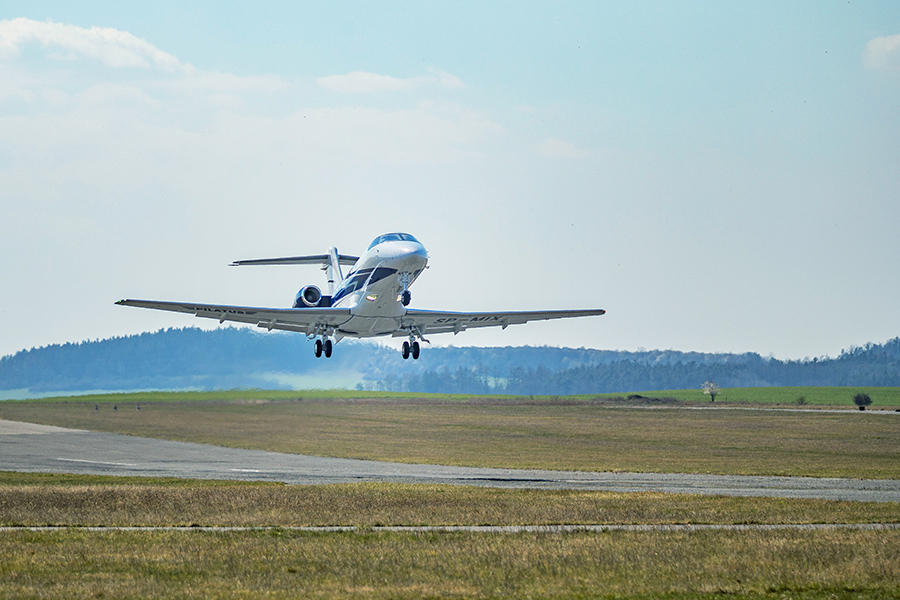
So while multi-engine airplanes might win in terms of raw performance, single-engine planes still shine when it comes to simplicity, ease of handling, and cost.
Single vs. Multi Engine: Safety
Now, let’s shift gears and tackle safety – a paramount concern for every pilot.
At first glance, you might think that having multiple engines is safer. If one engine fails, you’ve got another one (or more) to keep you airborne, right? This redundancy is indeed a key advantage of multi-engine aircraft.
However, there’s a twist.
Handling an engine failure in a multi-engine airplane is not straightforward. It introduces new challenges, such as asymmetrical thrust – where one engine is producing power, and the other isn’t. This can lead to control difficulties and requires specific pilot training and skill to handle correctly.
On the flip side, single-engine airplanes are simpler. You have one engine, and your primary concern is keeping that engine in good working order. If it fails, the procedure is clear: execute an emergency landing. It’s a scenario every pilot trains for extensively.
When it comes to safety, there’s an important distinction that we need to make between piston engines and turbine engines.
Turbine engines (either jets or turboprops) are far more reliable than conventional piston engines.
There is a fair argument that multi-engine piston aircraft are safer than single-engine piston aircraft. In theory, they are. But this only holds true if the pilot has the skill to efficiently handle an engine failure in a multi-engine aircraft.
Interestingly, modern single-engine turboprops are quite reliable. Engine failure is a rare event, thanks to advancements in engine technology and rigorous maintenance standards.
So, while multi-engine aircraft may offer a safety buffer with extra engines, it’s important to remember that safety isn’t just about redundancy. It also hinges heavily on pilot training, competence, piston vs. turbine engines, and the ability to handle unexpected situations – whether you’re flying single or multi-engine.
Single vs. Multi Engine: Cost
Alright, now let’s touch on a subject that’s often the deciding factor: cost.
When it comes to the purchase price and operational costs, single-engine airplanes typically have the advantage. They’re generally less expensive to buy, cheaper to maintain, and more fuel-efficient. This makes them a popular choice for flight schools, private owners, and those flying for leisure or on a budget.
On the other hand, multi-engine airplanes come with a higher price tag. They’re costlier to purchase, and their operational costs (think fuel, maintenance, insurance) are higher. Having more than one engine means double the maintenance and, usually, double the fuel consumption.
However, if you’re running a charter business or need to haul more passengers or cargo, the extra cost of a multi-engine plane could be a worthwhile investment. The ability to fly faster (and get paid by more passengers) makes the additional cost worthwhile. Additionally, the increased speed and range can make a multi-engine aircraft more cost-effective for long distances.
In the end, the better choice in terms of cost will largely depend on your needs, your budget, and how you intend to use the airplane. Ultimately, it’s about finding the right balance for your specific situation.
How to Choose Between a Single vs. Multi Engine
So, you’ve made it this far. Now comes the million-dollar question: how do you choose between a single-engine and a multi-engine aircraft?
First, consider your purpose for flying. If you’re a new pilot, a flight student, or if you plan to fly for leisure, a single-engine airplane may be the better fit. They’re simpler, more affordable, and great for learning the ropes.
Next, take a look at your budget. Remember, multi-engine aircraft tend to be pricier both to purchase and to operate. If you’re watching your wallet, a single-engine aircraft could be a more economical choice.
Then, think about your flying skills and experience. Handling a multi-engine airplane requires more training and a higher level of skill. If you’re up for the challenge and willing to invest in advanced training, a multi-engine aircraft could be an exciting step up.
Lastly, consider your range and payload needs. If you plan to undertake longer flights, carry more passengers, or haul cargo, a multi-engine aircraft (with its superior speed, power, and capacity) might be the way to go.
As you can see, there’s no one-size-fits-all answer. The “better” choice between single and multi-engine depends on your individual circumstances, flying goals, and personal preferences.
So take your time, weigh the pros and cons, and choose the best fit for your unique flying journey!
